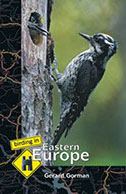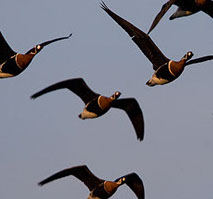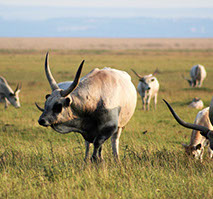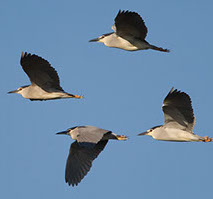
| ABOUT | WHY HUNGARY? | BIRDS | GUIDING | BUDAPEST BIRDING | OTHER WILDLIFE | CHECKLIST | LINKS |
BIRDING HUNGARY

why hungary?
Why go birding in Hungary?
Well, the simple answer is that there are some fantastic birds here!
Some such as Saker Falcon and Eastern Imperial Eagle are in their European stronghold here, others like Pygmy Cormorant, Lesser White-fronted Goose, Red-breasted Goose, Ferruginous Duck, Ural Owl and White-backed Woodpecker are very scarce in western Europe. In addition, Hungary is a relatively small country with diverse habitats, it is also safe and has an organised and value-for-money tourist infrastructure. All these things have added up to establish Hungary as one of Europe's best birding destinations. Furthermore, we are here to help!
When to visit? This of course depends upon which species one wishes to see and we are happy to advise on the best times to find your target species. There are great birds around all year round, with many very tempting species being resident.
Birding sites Hungary nestles in the Carpathian Basin at the heart of Europe. About half of the country is rather flat, particularly the Great Plain which lies east of the River Danube. There are wooded uplands in the west and the north, the highest point in the country being Kékes in the Mátra range at 1014m. Hungary has 10 national parks, and many nature reserves, although they vary in importance for birds. Many good birding spots actually lie outside protected areas. Habitats include broad-leaved forests, riverine woods, limestone hills, dry scrubland, steppes, pastures, meadows, marshes, freshwater lakes, salt lakes, fishponds and reed beds. Many of Hungary’s special birds reside on the puszta (flat lowland steppe and grazing land) such as exists in the Kiskunság region between the Danube and Tisza rivers. Further east beyond the Tisza is the Hortobágy where in autumn the majority of Common Cranes gather. In the west on the Austrian border is Lake Fertő (Hungarian part of the Neusiedlersee) where wetland birds abound. To the south is Lake Balaton which is perhaps at its best in winter, and the Kis-Balaton reserve, another area with vast reed-beds. The country's many fish-farms can also be great places to bird. These man-made, but often natural-looking wetlands, are dotted around the lowlands. Also in the west, Tata Old Lake hosts large numbers of geese from November to March. The Börzsöny, Aggtelek, Bükk and Zemplén hills run across the north of the country. These are mainly covered in broadleaved forests where woodpeckers and owls breed.
The above is just a brief overview, mentioning some of Hungary's more well-known birding areas, but the country is littered with great birding sites. For more in-depth information and background the following two books are recommended: The Birds of Hungary (Helm) and Birding in Eastern Europe (Wildsounds)

Covers the best birding sites in 11 countries, with directions and maps, from the Baltic States to the Balkans.
Birding in Eastern Europe (Wildsounds, 2006, ISBN-10: 1 8986 6507 9)
Buy Here
Hungary and neighbouring countries




